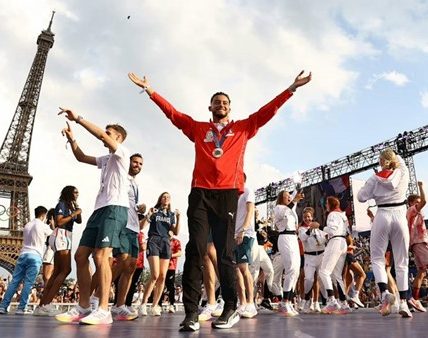Every year, the amount of ice in and around the Arctic melts. The salty water that freezes into a sheet of ice serves as a floor on which polar bears tend to explore their natural habitat. Polar bears use this ice to travel across the ocean, where they seek their primary food source: seals. Not only is the Arctic melting rapidly (about 12% per decade), but this sheet is becoming increasingly rare. (Minimal Arctic sea ice loss in the last 20 years, consistent with internal climate variability, 2025) Bears would have to swim long distances to find seals, and many of them do not make it back to land.
Why is this happening? We burn fuels such as coal, petrol, and diesel to heat our homes, fly our planes, and drive our cars. These release carbon dioxide into our atmosphere. An odorless, invisible gas that shoots up right into our air. Our planet has a protective blanket that traps some of the sun’s heat in our atmosphere, keeping it just warm enough for life to exist. As we add more and more carbon dioxide, it also gets trapped in our atmosphere, making the blanket thicker and thicker. (Climate Change: Atmospheric Carbon Dioxide, n.d.) Earth begins to warm much more than it should as more of the sun’s heat is trapped in our air. (Arctic warming seen at three times global average in years ahead, UN weather agency says, 2025) The phenomenon is called global warming, and it will damage our planet for centuries to come. (Rapid loss of Antarctic ice may be climate tipping point, scientists say, 2025) As the Arctic melts, the polar bears will starve and drown.
Economists often claim that people will always organize resources optimally for everyone’s benefit because it is in their interest to do so. (Fundamental theorems of welfare economics, n.d.) However, the reality of climate change exposes the weakness of this argument and highlights the need for more effective solutions.
This assumption fails with climate change. As the US expands fossil fuel programs and more harmful gases enter our atmosphere, companies remain motivated by profit, not the planet’s future. (Arctic tundra now emits planet-warming pollution, federal report finds, 2024) The resulting environmental damage—known in economics as an “externality”—harms animals and ecosystems without affecting the prices we pay. (Arctic Bears | The Melting Arctic’s Impact on Its Ecosystem, 2008) Without action, devastating outcomes await polar bears and other species.
There have been attempts to ‘incentivize’ firms to cut down their carbon emissions. Some countries implemented a carbon tax, and companies had to pay fines for pollution. Such measures are a significant step in the right direction. But these economic solutions are half-measures that do not make people’s lives easier; they make them more complicated. Governments often scrap taxes and penalties to boost economic growth. So what can we do? We must reverse our thinking. It should be easier to do the right thing, not harder. The greatest step governments can take is to incentivise the use of alternative energy sources, mainly hydrogen fuel. Hydrogen, when combusted, produces no greenhouse gas. Investing in the infrastructure needed to produce hydrogen fuel from clean energy and mandating the development of hydrogen-powered motor vehicles. This is one small but significant step in the right direction. By phasing out the need for fossils, the companies will naturally begin to cut emissions and production.
We only have one planet. As the most advanced species, we are Earth’s developers and its guardians. It is our duty to keep Earth clean and sustainable, for humans and animals alike. By taking small but significant steps, we can save ourselves, our home, and the polar bears.
References
(2025). Minimal Arctic sea ice loss in the last 20 years, consistent with internal climate variability. https://phys.org/news/2025-08-temporary-slowdown-arctic-sea-ice.html
(n.d.). Climate Change: Atmospheric Carbon Dioxide. climate.nasa.gov. https://climate.nasa.gov/vital-signs/carbon-dioxide/
(2025). Arctic warming seen at three times global average in years ahead, UN weather agency says. https://www.reuters.com/sustainability/cop/arctic-warming-seen-three-times-global-average-years-ahead-un-weather-agency-2025-05-28/
(2025). Rapid loss of Antarctic ice may be climate tipping point, scientists say. https://www.reuters.com/sustainability/cop/rapid-loss-antarctic-ice-may-be-climate-tipping-point-scientists-say-2025-08-20/
(n.d.). Fundamental theorems of welfare economics. en.wikipedia.org/wiki/Fundamental_theorems_of_welfare_economics. https://en.wikipedia.org/wiki/Fundamental_theorems_of_welfare_economics
(2024). Arctic tundra now emits planet-warming pollution, federal report finds. National Oceanic and Atmospheric Administration’s annual Arctic Report Card. https://www.kuow.org/stories/arctic-tundra-now-emits-planet-warming-pollution-federal-report-finds
(2008). Arctic Bears | The Melting Arctic’s Impact on Its Ecosystem. https://www.pbs.org/wnet/nature/arctic-bears-the-melting-arctics-impact-on-its-ecosystem/780/





